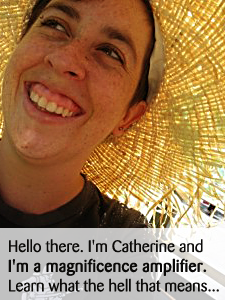Rina loved story hour. She loved watching twenty pairs of eyes staring up at her enthralled as she told tales, and the stories she liked best were the fairy tales of old.
But then one day she told the story of Rumpelstiltskin, the troublesome gnome who demanded a first-born child in exchange for his straw-spinning gifts, and she ended the tale with the thump of the closing book, “…and it served him right.” And thus she sealed her doom.
That night she awoke from a strange dream to find herself standing in the middle of a warehouse, with a gnome looking up at her and smiling maliciously. “What am I doing here? Who are you?”
“Oh no, sweetheart, I’m not falling for that old trick. You can call me Mr Blue, or maybe Master.” He leered. “And I have a challenge for you that you can’t refuse.”
Rina hadn’t read fairy tales all her life for nothing. “Do I have to spin straw into gold? Or fetch a golden ball from a well? Or take the words from the golem’s head?”
“Nothing quite so elegant. Look around you.”
Rina saw crates and crates and crates, each labelled: Round-mouth shovel x 20. There didn’t seem to be a spinning wheel or a pair of red shoes hiding behind any of the crates, so she turned around quizzically. “What am I doing with these?”
“You have to sell them. There are ten thousand shovels here, and within the next six months you have to sell every single one, not getting less than $30 each.”
“What happens if I don’t?”
“Remember all the fairy-tale punishments? Let’s say… all of them.”
“All of them?”
“All of them.”
Crap!
So Rina started to sell shovels.
First she went to the big hardware stores, but their suppliers sold shovels to them at $25 or less. They weren’t interested, although one man named Patrick was very sympathetic when she told her adjusted tale of woe – how her batty Uncle Geoff had left her a warehouse full of shovels instead of an inheritance – and he recommended a few other stores she hadn’t thought of.
The smaller stores bought a few shovels, but only a few. It was time to try selling directly.
Rina bought ads in the newspapers, the tradesman’s magazines, and on Facebook. (She thought, “You never know.”) Her prices were similar to the hardware store, but it was not terribly convenient to buy from her, so few people did.
So she loaded up her little car with shovels and went to building sites, gardening conventions, homemaker centres and even sports stadiums. (“They have a lot of people. You never know.”) She sold with the passion of someone who sees the oven and the red-hot shoes and the crows and the tower in her future, and she sold more shovels than anyone would have thought likely.
But at the end of four months, she had only managed to sell three thousand shovels out of the ten thousand. The scrofulous gnome appeared again, with a grin that was not allowed to be shown to children under thirteen years of age.
“You’ve only got two months left. Not doing so great, are you?” he purred.
“No!” wept Rina. “I’ve worked so ha-aa-aaard, I’ve travelled for ages, but I’m running out of people to sell shovels to…”
“Yeah, well. Sucks to be you.” said the unsympathetic Mr Blue.
“You’re so mean!” wailed Rina. “Are you going to take your money now?”
Mr Blue sneered with a face well designed for sneering. “I don’t care about the money. Keep it. Burn it. Shove it up your ass, I don’t care.”
Rina sobbed into her hands violently. Those who knew her might think that it looked a bit like she was hiding laughter.
Rina gets serious.
Once Mr Blue was gone, Rina got thoughtful. There was no way she could sell another seven thousand shovels in two months as she’d been doing it.
She decided to dig a little deeper. (Sad puns were her only source of joy by now.) Perhaps she could find a way to improve her shovels so they’d sell more?
She already knew that the round-mouth shovels were used for a bit of digging and to move materials around. She ignored the small panicking voice that reminded her she only had eight weeks left and spent time to see them in action, talking her way onto building sites and landscapers teams.
One week later she tallied what she’d seen and despaired. The builders and gardeners and roadworkers were already amazingly efficient with their shovels. When moving gravel and sand and dirt they would get the maximum possible load into their wheelbarrows with one nonchalant dig-and-flick action that dropped not one grain on the ground. They used heavy gloves so there was no chance of blisters. Many red-necked men, taking pity on her, told her gently that they couldn’t really think of any way to improve on the shovel.
That weekend she returned again to the hardware store to ask the advice of Patrick. She described the builders and their work and stopped when she saw a strange gleam in Patrick’s eye.
“Builders and gardeners and professionals use wheelbarrows, right?”
“Yeah, the shovels are for getting things onto or off the wheelbarrow.”
“But what about everyone else? There are lots and lots of people who don’t have a wheelbarrow but need to move sand and dirt around. How do they do it?”
Rina kissed Patrick on the mouth, making him go a delightful shade of red. “You’re a genius! Can I borrow a clipboard?”
The rest of the weekend was spent out the front of the hardware store, interviewing the populace. “Hi, do you have a wheelbarrow? Do you shovel dirt or gravel? What problems do you have with it?”
Rina heard from lots of people who moved dirt and mulch and sand with only a shovel. They said it was a pain. “So what you do, right, is you get it on the shovel, and you’ve only got to go about two metres to the garden bed, right, but you have to hold your shovel totally steady so all the mulch doesn’t fall off, and that’s such a pain on your wrists. And if you get the kids to do it then they spill it a lot.”
That Monday Rina and $90,000 went for a walk to an engineering firm. The $90,000 became $20,000. Rough sketches became detailed ones, and then prototypes. The manufacturing team was put on double overtime. Six days later, the Shovelbarrow was ready for sale.
The Shovelbarrow was a normal shovel – of course – with a special attachment. It dug like normal, but when you pressed the button on the handle a strong plastic bubble snapped into place. You could carry the shovel pointing straight down at the ground and no dirt would fall out until you pressed the button again.
Rina revisited the hardware stores with her new invention. She grinned as every buyer’s eyes lit up and they went on and on about how smart an idea it was.
The orders started avalanching in, and a second and third manufacturing team were brought in with the new money. Within a month, Rina had twenty thousand orders for seven thousand shovels.
On the last day of the six months, she was waiting in the empty warehouse when Mr Blue arrived. She was leaning on a shovel and keeping the look of triumph off her face.
“Yeah, well. So you found a way to sell ten thousand shovels. Bully for you.” A gleam of cunning appeared in his eyes. “Or did you not mange to sell one of them?”
“Oh no,” said Rina. “I bought this one myself. I have the receipt, if you want to see it.”
“And is this one of your fancy-ass Shovelbarrow whatsits?” he sneered.
“Nope, this is a standard shovel. It’s just like all the others except for one small thing…”
“What’s that?”
“I got it sharpened.” Light gleamed from the knife-edge of the shovel as Rina moved in.
You don’t need to know their name to defeat them if you’re well armed, you know.
The moral of the story
Fairy tales are messed up. Also:
Selling something extraordinary is a thousand times easier than selling something ordinary.
You can choose to do your marketing at the end, after every other decision has been made - like Rina at the gardener’s convention, exerting tonnes of energy to convince people that this is the shovel they want.
Or you can do your marketing at the beginning, by designing something worth talking about. When you create something that people want to buy, the rest is easy.
So how do you create something worth talking about?
I know how, my lovely, and I thirst to teach you. Sign up for Mo’Cash, Mo’Joy, the weekly Cash and Joy newsletter, and keep learning more.
P.S. Don’t ask me why I keep writing about wheelbarrows lately. I have no idea.
![]() photo credit:
photo credit:







